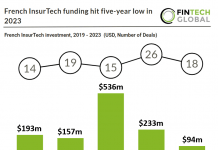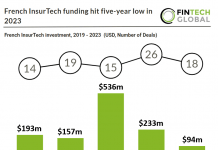A whitepaper by InsurTech firm Akur8 has outlined how a range of recent developments in the market are leading to calls for more competitive and accurate pricing.
According to Akur8, newly emerging changes in risk and customer behaviour, a rapidly changing competitive environment and challenges due to the pandemic all call for more competitive and accurate pricing – and stated the increasing pressure for better pricing strategies ultimately ‘must translate to changes in price away from the current strategy’.
Akur8 said, “To build a new pricing strategy, an important piece of the equation is to have a reliable estimate of the risks within the current portfolio. New trends in risk, a shifting mix of characteristics in the portfolio, along with new sources of data, may uncover new buckets of high risk individuals for which a high premium increase should be enacted to maintain portfolio profitability and loss ratio.”
The firm noted that such disruptive price changes can have a negative impact on customer retention – with firms needing to manage their existing book of business, they stated it is key to avoid as much as possible rate updates that generate a strong negative impact on retention, driving policies away with high premium increases. In addition, abnormal price changes may draw additional concerns from the regulatory as they may receive complaints of unfair rate increases.
Akur8 remarked that for these reasons, ‘it is vital for actuaries to have complete control and understanding of the final rate changes that are applied to the current portfolio by a proposing pricing update’.
Dislocation Analysis
The company remarked that the control of rate changes is particularly challenging for more complex insurance products, as several risks are covered by these contracts and each risk requires its own specific modelling. When combined, the effect may lead to disruptive changes that negatively impact retention and decrease profitability.
Akur8 stated, “To master the delicate balance between portfolio profitability and retention, it is key for insurers to directly review the impact of a planned rate change on their portfolio. When in the process of updating their rates, insurers must analyse the impact of the projected change between old and new prices.
“This approach, commonly known as ‘Dislocation Analysis’, stands out as a must-have in order to directly and accurately understand the impact of price instability on renewing customers. Mitigation measures, such as manual rating adjustment to limit extreme price changes should be taken based on direct price understanding, without over-reliance on a large number of models.”
Dislocation Analysis is to date often performed either in Excel or via an ad-hoc solution, created in house. The pricing expert has to manually understand the portfolio segments that are impacted by the new pricing strategy via time consuming variable-by-variable analysis.
How can this be helped? Akur8 believes Dislocation Analysis can be empowered through Transparent Machine Learning. The firm said the dynamics of an integrated Dislocation Analysis, powered by Transparent Machine Learning, are straight forward and can be summarised as select, analyse and action.
As the first one, select means that through an integrated Dislocation Analysis solution, analysis workflow allows the pricing expert to easily select all the subset of clients who proposed price change is potentially disruptive.
Secondly, for analyse – once a subset of a portfolio is highlighted, transparent machine learning allows the pricing expert to quickly find the root cause of the problems and to analyse the problem at various depths of sophistication. For action, once the potentially disruptive portfolio segment is well defined through their rating variables, the pricing expert can define the right rating adjustment to mitigate the impact or profitability.
Akur8 concluded, “Overall, leveraging Dislocation Analysis allows insurers to directly visualize the expected loss ratio impact of their projected price changes. Furthermore,the Select, Analyse and Action flow allows seamless detection of the segment of the portfolio which are mis-priced, providing a more accurate picture of what the “right” pricing approach for their customers should be.
“Renewing the pricing strategy to adjust to market and risk changes is essential for insurers and requires them to find the optimal tradeoff between rate disruptions and profitability. These matters are the key objectives of the Dislocation Analysis. Empowered by Transparent Machine Learning, the pricing expert can quickly select and analyse the portfolio segments which are negatively impacting the insurer’s business and leverage the insights to build the best possible premiums.”
To view the full whitepaper click here.
Copyright © 2022 FinTech Global











